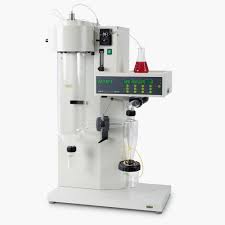Understanding Machine Efficiency in Oil Extraction
When discussing the efficiency of an Essential oil extraction machine, it's crucial to consider both the percentage of oil extracted and the energy consumed in the process. Efficiency isn't just about the yield—it's also about how much input (raw material and energy) is required to produce an output (essential oil).
Key Factors Impacting Efficiency
Several factors influence the efficiency of these machines:
- Type of plant material: Harder materials like wood require more energy to break down.
- Extraction method used: Steam distillation, cold press, and solvent extraction vary in efficiency. For example, steam distillation might extract about 92-98% of oils from highly aromatic plants.
- Machine design: The design of the machine plays a significant role. Advanced models with better heat management and lower energy use can enhance overall efficiency.
Energy Use and Yield Ratios
Energy consumption is a critical aspect when assessing efficiency. A top-tier essential oil extraction machine might use approximately 1.5 kWh per pound of plant material processed. This energy usage translates to operating costs and impacts the economic feasibility of the extraction process.
Efficiency Metrics in Practice
To put numbers into perspective, consider lavender essential oil extraction:
- Typical yield: About 0.5% to 1.5% oil by weight of lavender flowers.
- Energy usage: Depending on the machine, between 1.2 to 2 kWh per pound of lavender.

Improving Efficiency Through Innovation
Recent advancements in extraction technology have led to machines that optimize the use of energy and increase the yield. For instance, some modern extractors feature improved chamber designs that minimize heat loss and maximize oil recovery.
The Role of Scale in Efficiency
Scale also plays a significant role. Larger operations can often achieve better efficiency through economies of scale, reducing both per unit energy costs and material wastage.
Essential Oil Quality and Machine Efficiency
It's important to note that higher efficiency doesn't always equate to better quality oil. The method and machine settings must balance efficiency with preserving the oil's aromatic and chemical properties. For instance, excessively high temperatures might increase yield slightly but at the cost of degrading the oil's quality.
Choosing the Right Machine
When selecting an Essential oil extraction machine, consider not only the upfront cost but also operational efficiency and maintenance expenses. A slightly more expensive machine that offers higher efficiency and lower long-term costs can be a more prudent investment.
Final Thoughts
The efficiency of an essential oil extraction machine is a multi-faceted issue, encompassing yield, energy consumption, and operational costs. By focusing on both technological innovations and operational strategies, producers can optimize their processes to ensure that they are getting the most out of their investment.